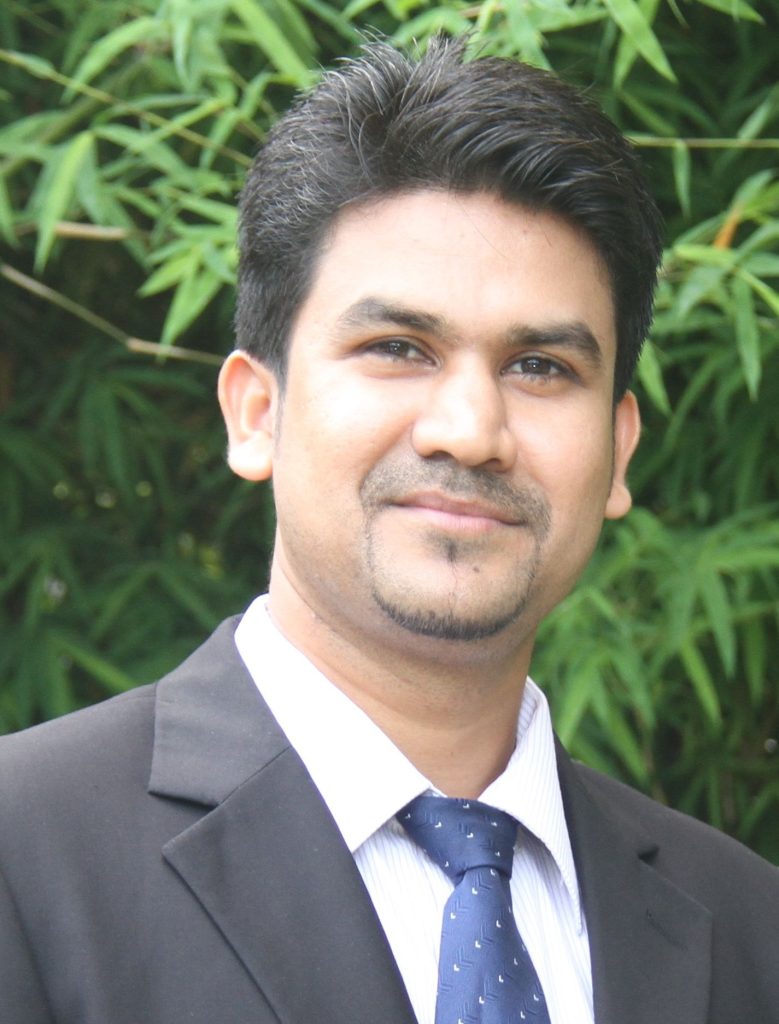Biodata

Assoc. Prof. Dr. Mahendra Rao Somalu
Fuel Cell Institute, Universiti Kebangsaan Malaysia (UKM), Malaysia.
Assoc. Prof. Dr. Mahendra Rao Somalu is currently a Senior Research Fellow at the Fuel Cell Institute, Universiti Kebangsaan Malaysia (UKM). He received his PhD from Imperial College London in 2012. Since 2013, he has been an active Associate Member of the Institution of Chemical Engineers (IChemE), and since 2017, he has been a Member of the Malaysian Association of Hydrogen Energy (MAHE) and a Member of the Malaysian Association of Solid State Science (MASS) since 2019. He has received several awards, including the Best Researcher Award in 6th Edition of International Research Awards in New Science Inventions (NESIN Award 2023), Gold Award in the 4th International Malaysia-Indonesia-Thailand Symposium on Innovation and Creativity 2021 (SIC 2021), Anugerah Bitara Penerbitan (Excellent Publication Award) in the science category from UKM in 2018, Silver Award in the 3rd International Innovation, Design, and Articulation (i-IDEA 2016), and Gold Award in the Invention, Innovation & Design Exposition 2015 (iideX2015). His article entitled “Structural and Electrochemical Properties of Lanthanum Silicate Apatites La10Si6-x-0.2AlxZn0.2O27- for Solid Oxide Fuel Cells (SOFCs)” was chosen as the Article of the Year 2021 by Hindawi and was published in the International Journal of Chemical Engineering. With over 15 years of experience in the development of high-temperature fuel cell technology, nanomaterials, biomass gasification, and hydrogen energy, he has published more than 140 scientific articles in various high-impact journals and has been invited to speak as a keynote and invited speaker at various national and international conferences.
Speech detail
Current Progress in Solid Oxide Fuel Cell Technologies
Solid oxide fuel cells (SOFCs) are electrochemical devices that efficiently convert the chemical energy of a fuel into electricity at high temperatures between 500 and 1000 °C. They are particularly well-suited for combined heat and power (CHP) generation due to their ability to utilize the high-grade heat exhaust for other heating purposes, resulting in overall CHP system efficiencies of up to 90%. SOFCs consist of key components, including the anode, electrolyte, and cathode, which must meet specific requirements such as conductivity, chemical stability, porosity, and catalytic activity. The electrolyte needs to be highly dense with excellent ionic conductivity, while the electrodes must possess porous structures and mixed ionic and electronic conductivity properties. Compared to conventional power generation systems, SOFCs offer several advantages. They can significantly reduce CO2 emissions by approximately 50%, minimize transmission losses associated with centralized power plants, and facilitate on-site electricity production. According to a report by Maximize Market Research Pvt. Ltd., the global SOFC market is projected to grow from USD 1.53 billion in 2021 to USD 7.98 billion by 2027, with a compound annual growth rate (CAGR) of 31.7% during the forecast period. This growth is driven by increasing demand for clean energy, a focus on carbon emission reduction, and the expanding use of SOFCs in various industries. Currently, North America is the largest market for SOFCs, followed by the Asia-Pacific region, which is expected to experience the highest CAGR in the forecast period. The Asia-Pacific region’s growth can be attributed to government initiatives promoting the adoption of SOFCs and the rising demand for clean energy. Key players in the global SOFC market, such as Bloom Energy, Sunfire, Solid Power, Ceres Power Holdings, and Convion, are actively involved in research and development, partnerships, and acquisitions to enhance their market presence and develop advanced SOFC technologies. However, the widespread adoption of SOFCs faces several challenges that must be addressed. These challenges include cost reduction, as the current technology can be expensive, and improving the durability and reliability of SOFC systems. Overcoming these hurdles will be crucial to successfully integrating SOFCs into the energy landscape and reaping their full benefits.

